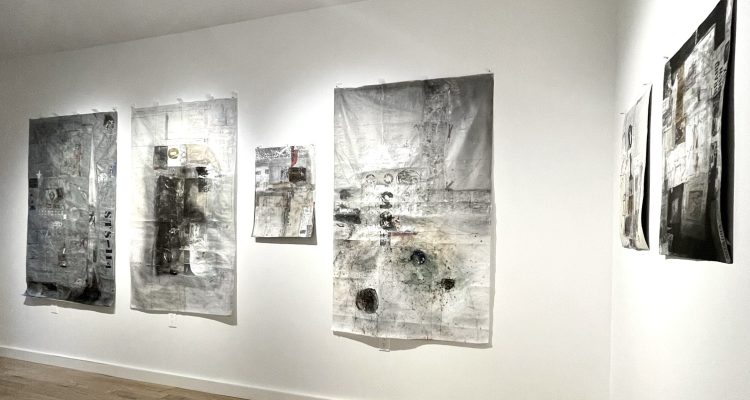By John Austin
New collage-based paintings by a Japanese artist Mami Kawasaki, recently exhibited at Artifact Projects, captivate audiences with a profound mastery of three interconnected qualities that define her artistic expression.
The first quality that immediately strikes the viewer is Kawasaki’s remarkable ability to regulate forms and compositions within her work. This skill creates a visually rich tapestry that seamlessly blends the recorded and the imagined, infusing each piece with a vital energy that brings the artwork to life before the viewer’s eyes.
The second quality, non-finito, adds a layer of intrigue to Kawasaki’s creations. Purposefully avoiding a sense of beginning or closure, her art exists in a timeless state, allowing her to distill the eternal from the transitory. This permeable sense of time not only contributes to the overall coherence and control of her works but also invites viewers to engage with the pieces in a way that transcends the constraints of conventional temporality.
The third aspect, the conjunction of opposites, serves as the foundation for the first two qualities. In line with Carl Jung’s concept of coniunctio oppositorum, Kawasaki skillfully combines seemingly conflicting energies within her artwork.
This intentional blending of automatism and conscious delineations results in paintings that reveal a dynamic interplay of opposing forces, ultimately producing uniquely individuated images.
As a whole, Kawasaki’s body of work reflects her indispensable capacity to evoke emotional involvement. Beyond the aesthetic appeal, her art delves into defining a sense of history, memory, and self. Avoiding sentimentality, Kawasaki navigates the complexities of divided loyalties, presenting viewers with a poetic visual expression that captures the changing, fleeting, and inherently incomplete nature of the stable, complete, and enduring entities she explores.
In essence, Mami Kawasaki’s artistic journey is an authentic and compelling exploration of creativity. Her complex pieces stand as a testament to her ability to harmonize contrasting elements, resulting in an evocative and timeless collection that resonates with the ever-shifting nature of human experience.
John Austin is an art writer living and workin in Manhattan
